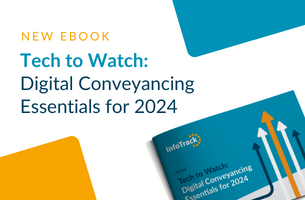Posted by Nigel Wright, managing director of Legal Futures Associate Converge TS

Wright: financial justification is most vital element
Investment in IT is necessary for forward-thinking law firms looking to succeed in today’s market. However, the value of IT is often under-appreciated and seen as just another overhead by senior management.
It’s therefore important to understand how to write a convincing business case that helps decision makers understand why IT investments are necessary and the potential impact on the firm’s ability to compete.
Here are four steps to writing a successful business case:
Align to your firm’s strategy
Is your firm looking to increase productivity, implement new practice management software or acquire other firms? These are all strong reasons to invest in IT.
By demonstrating a clear connection between the higher-level business objectives of the firm and the planned investment, you’re far more likely to succeed.
Sell the idea before getting into the technical details and costs, and use real life examples where possible to illustrate how other firms have benefited from similar projects. Your contacts in the industry may be helpful here as they may be able to provide you with an unofficial case study to take to the board.
Show an understanding of the competitive landscape and use this to compel decision-makers to act. The increase in cyber-attacks, upcoming personal injury reforms and the introduction of GDPR can help to create urgency and get your IT spend signed off more quickly.
Engage with stakeholders
If you have a board of decision-makers, they should be aware of the project before the final business case lands on their desks.
You should involve decision-makers, influencers and those affected by the project from the beginning. Use the RACI model (Responsible, Accountable, Consulted, Informed) to identify roles and responsibilities.
Work with key people to understand potential objections to help you to position your case and make it more persuasive. To strengthen your argument, gain support from end-users and show how the project will benefit your clients.
Your finance director is crucial here. Use their expertise to build a sound financial argument and ensure you have their buy in before your managing partner/director approaches them.
Understand the financials
To ensure your business case gets the seal of approval, the most vital part is the financial justification. You need to quantify the contribution of the investment to the ability of the business to deliver on the strategic aims you identified at the beginning. Use standard measurements such as return on investment, payback period and total cost of ownership.
Decision-makers will be taking a critical look at these figures, so it’s important not to overstate the benefits.
For example, you implement remote access so that staff can work whilst travelling. So, 50 employees with an hourly rate of £200 within your firm spend on average five working hours travelling by train per month. If they could utilise their time better and work on the train, then that’s 50 staff x 5 hours x £200 per hour = an increase in revenue of £50,000 per month.
Right? Wrong. Your staff might not want to work on the train, they might have poor connectivity or they may find it a hassle to log in off-site. The point is, you need to ensure your targets are realistic to remain credible.
However, whilst the financials are important, you shouldn’t forget the softer benefits. Improved employee satisfaction, reduced risk of human error and fewer outages are benefits that are hard to quantify but help you to build a stronger case.
Assess alternatives & risks
Lastly, you need to show that you have considered all options, including the option to do nothing. Complete a high-level cost/benefit analysis of several alternatives you’ve considered, highlighting the strengths, weaknesses and risks of each.
In terms of project risks, consider downtime, potential areas for overspend, deliverables you may not meet and deadlines that may slip. Explain how risks will be managed and the steps you’re taking to avoid negative outcomes.
Conclusion
Whichever way you choose to present your case, there are three points to take away from this blog:
Appeal to your audience: Identify the most important stakeholders and make sure you understand their drivers and concerns before you complete your plan.
Be realistic: Stick to the facts and use sound financial calculations to make your argument.
Build trust: An open and transparent analysis of costs and risks will prove your ability to plan and manage this project to the benefit of the firm.












Leave a Comment